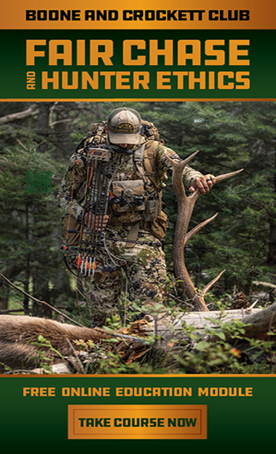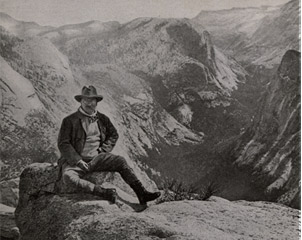New State Record: Youth Hunter Takes Massive Elk in Virginia’s First Elk Hunt

A raffle ticket earns a young hunter (and his dad) the chance to chase elk in Virginia. A historic hunt ensues, ending with a big bull and bigger memories.
By PJ DelHomme
Bo Prieskorn was hunting pronghorn with his sons in New Mexico when his phone rang. He didn’t recognize the number but answered anyway. On the line was Chris Croy, the regional director of Virginia and the Carolinas with the Rocky Mountain Elk Foundation (RMEF). Croy asked Prieskorn if he wanted to go elk hunting in Virginia. Bo turned to his 15-year-old son Austin who was right next to him, and asked him the very same question.
Months earlier, Bo had bought a handful of raffle tickets to support conservation efforts on behalf of elk in Virginia. He thought he might win a rifle or some binoculars. Little did he know that he and Austin would participate in an elk hunt a decade in the making. And there was no way for him to know that his 15-year-old son would shoot a bull that scored 413-7/8 (net) to put him at the top spot for Virginia elk. In fact, Austin’s bull is the only bull in the Boone and Crockett records book from Virginia, but thanks to current restoration and conservation efforts, it certainly will not be the last.
Return of Elk to Virginia
Before the 1600s, elk inhabited Virginia, mainly west of the Blue Ridge Mountains. As settlers pushed west, the elk population declined. Then in 1855, Colonel G. Tuley killed the last known elk in Virginia. Beginning in 2012, Virginia’s Department of Wildlife Resources began a multi-year project to restore elk to three southwest Virginia counties in an area known as the Elk Restoration Zone. With help from the Nature Conservancy, RMEF, Southwest Virginia Sportsmen, other groups, and private landowners, the elk thrived on reclaimed coal mine land.
From 2012-2014, biologists relocated 75 elk from Kentucky to Buchanan County. By 2020, DWR estimated more than 250 elk in Virginia’s herd. In 2022, on the 10th anniversary of the reintroduction, the state implemented an elk hunt, issuing six tags, with one conservation tag issued to RMEF. Of the five lottery-style tags administered by DWR, four of the winners had to be Virginia residents.
With nearly 32,000 applicants, the state elk tag lottery generated $513,000 for DWR’s general fund. Residents paid $15 each for a chance, while nonresidents paid $20. The RMEF lottery tag generated $93,000, which will go toward improving elk habitat within the elk management zone. For anyone interested, the application deadline for the 2023 Virginia Elk hunt lottery ends March 30.
When Bo learned that he’d won, there was no question that he wanted Austin to hunt. “I haven’t hunted myself in seven years,” Bo says. “It’s been all about my boys.”
A Father and Son Hunt
The Prieskorn family lives in New Mexico, and they’re no strangers to hunting. Bo was an outfitter for 30 years. After selling his business, he now spends his time on wildlife photography and taking his boys, Austin and Mason, hunting around the western U.S. Hunting elk east of the Mississippi River was going to be something completely new.
In September, Bo drove to Virginia from New Mexico to scout and take photos before the October hunt. During that scouting session, Bo found a monster bull that looked like it would score 450. “He was so old, he could barely hold up his antlers,” Bo says. He never saw that bull again.
When October hit, Austin and Bo drove 35 hours back to Grundy, Virginia, in time for an orientation dinner before opening day. There, they met a landowner who mentioned a big 8x9 bull hanging around his place. With little public land, having landowner buy-in for elk and elk hunting has been a key component in the reintroduction process, says RMEF’s Croy. “We would have no elk, and there would be no hunt without the private landowners. They are 100 percent to be commended for helping make this hunt happen,” he says.
After dinner, they went to see if they could find the bull. As the sun was setting, they spotted a massive bull skylined. The next day, they met with the landowner, who showed them around, and that evening, the bull was right where he had been the day before.
The night before opening day, Bo asked Austin if he would consider holding out for a big, mature bull. “The answer to that was no,” Austin says. “I just wanted to shoot any bull.” While he’s applied for elk tags in his home state of New Mexico and drawn tags for cows, he’s never drawn a bull tag. This would be Austin’s first shot at a bull elk.
The Blink of an Eye
In the morning, they walked to the top of the mountain, and the woods were dead silent. A mile away, Austin glassed some bulls. Bo belted out a bugle, then a cow call. The mountain lit up with elk. The bull they were after had a very distinct bugle, and Bo told Austin they might have a chance at him.
After decades of guiding and outfitting, Bo knows how to speak elk. Using his calls, he pulled the herd of 30 cows toward them from a mile away. In the very back was the bull of a lifetime. The men moved to a better vantage point, and Austin spotted him again. Taking his time, he put his 30 Nosler on a set of shooting sticks, settled the crosshairs, and connected at 160 yards. Austin filled the tag in 90 minutes. “It was over too quick,” Austin admits. “My dad picked up the casing, and I told him that I was going to keep this forever.”
“I have a lot of experience, and I stayed relatively calm,” Bo says. “But I can tell you that when that bull fell, I lost it. And when Austin put his hands on that elk, tears came out from both of us.”
DWR biologists want to gather as much data as possible on these elk, which means they didn’t field dress the bull. Instead, the landowner and local volunteers helped haul out the entire elk, transporting it to a check station. By then, word had spread about Austin’s bull. “We were a little nervous being from New Mexico and shooting the state record,” Bo says. “We didn’t know how everyone was going to react.”
Of the six bulls killed, Austin’s was, by far, the largest. “People came from all over different counties to shake Austin’s hand,” Bo says. “Everywhere we went in town, people knew who Austin was.”
“I just want to say how the people there were super nice and genuine,” Austin adds.
Is the East Hiding a New World’s Record Elk?
Austin will have a hard time beating his Virginia record, but he’s okay with that. Is he done elk hunting? He answers with a resounding, “No way.” Where does he plan on hunting elk next year? “Anywhere,” he says.
Since Austin’s record-breaking bull, interest in Virginia’s elk hunt has skyrocketed. When the elk permit lottery opened for Virginia hunters on February 1 this year, Croy says the state made $100,000—on the first day. “That 413 bull was the best advertising the state of Virginia ever had,” he says.
Perhaps the biggest thing going for Eastern elk is the people who live there. Not only are they genuinely happy to see a 15-year-old out-of-state hunter kill the state record, but they also love elk. “The people in that part of Appalachia have adopted these elk as their own,” Croy says. “They have volunteered so many hours to restore wild, free-ranging elk there. I mean, you can’t believe it. It was just meant to be.”
And there are bigger bulls out there. Unlike their western counterparts, elk in the East don’t have harsh winters, and they don’t have many four-legged predators. “They live in a day spa,” Croy says. “And I can tell you, the next Boone and Crockett World’s Record elk will come from the East.”
The Importance of Records in Big Game Management
When you enter your trophy into the Boone and Crockett system, you aren’t just honoring the animal and its habitat. You are participating in a data collection system that started in the 1920s and was refined by Club members in 1950.
Today, there are nearly 60,000 trophy records. By establishing a records database more than 70 years ago, the Boone and Crockett Club established a scientific baseline from which researchers can use to study wildlife management. If you’re still on the fence about entering your trophy, we encourage you to read Why Should I Bother to Enter My Trophy. To the best of our ability, we ensure that the trophies entered into the records were taken in accordance with the tenets of fair chase ethics. Despite what some may think, the Boone and Crockett records are not about a name or a score in a book—because in the end, there’s so much more to the score.

PJ DelHomme writes and edits content from his home in western Montana. He runs Crazy Canyon Media and Crazy Canyon Journal.
Popular Links
Popular Links


Our Mission
It is the mission of the Boone and Crockett Club to promote the conservation and management of wildlife, especially big game, and its habitat, to preserve and encourage hunting and to maintain the highest ethical standards of fair chase and sportsmanship in North America.
